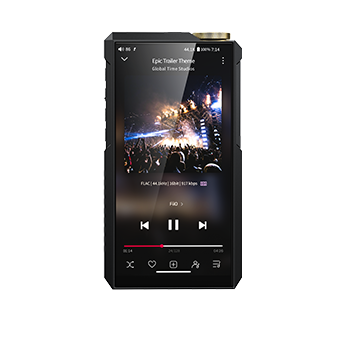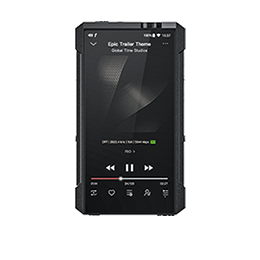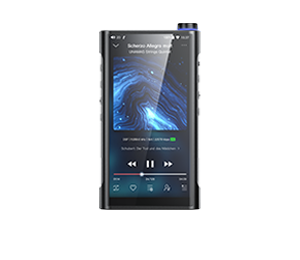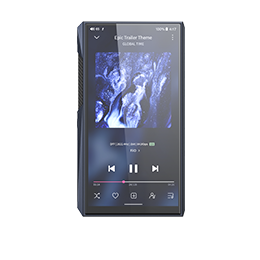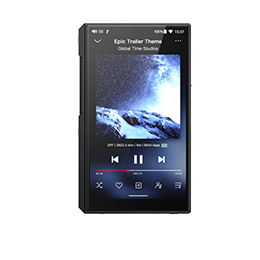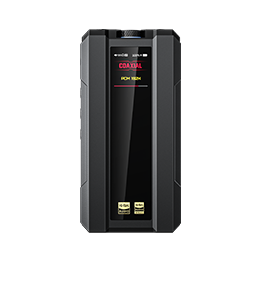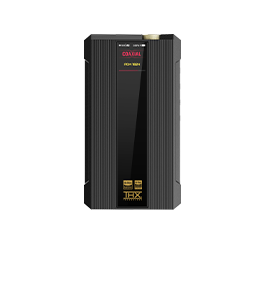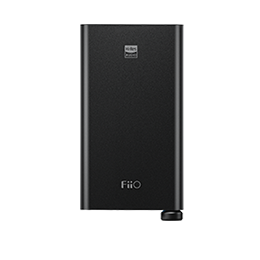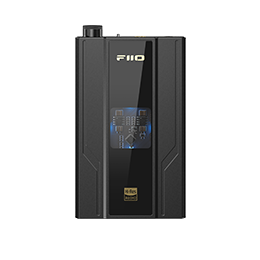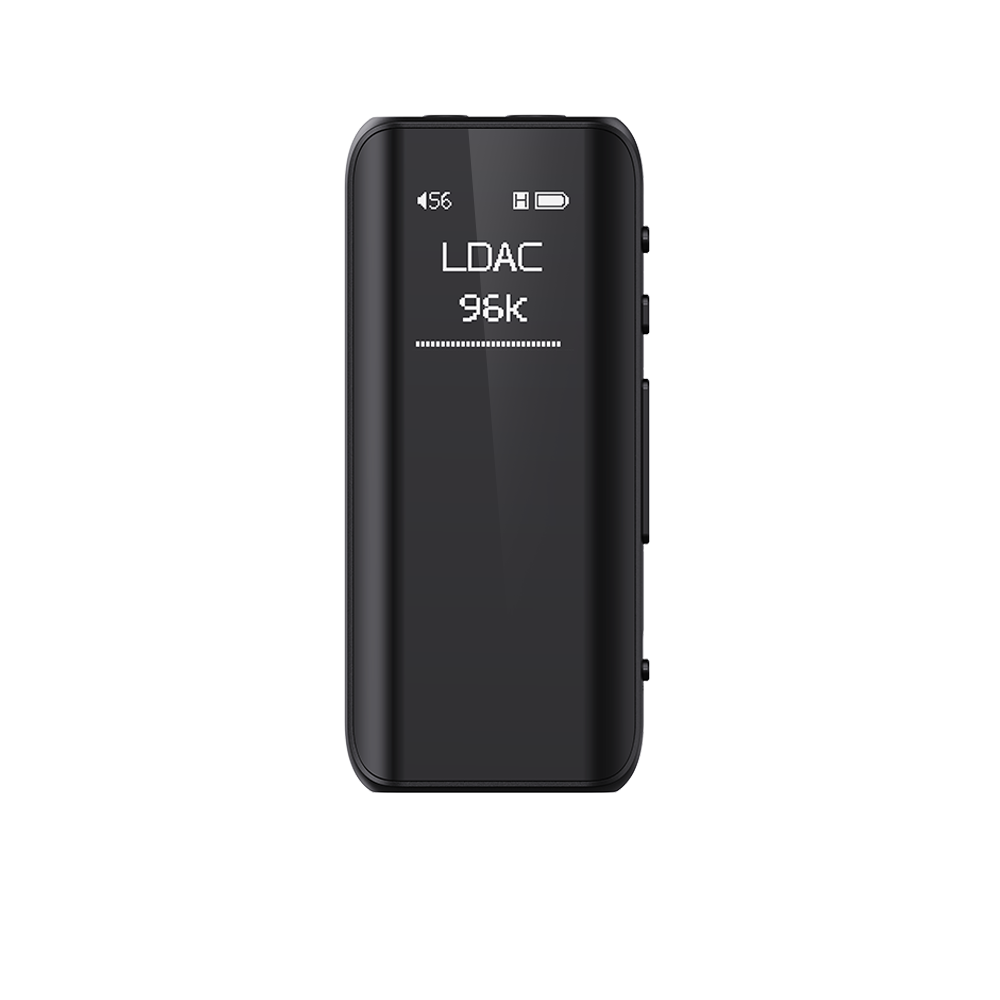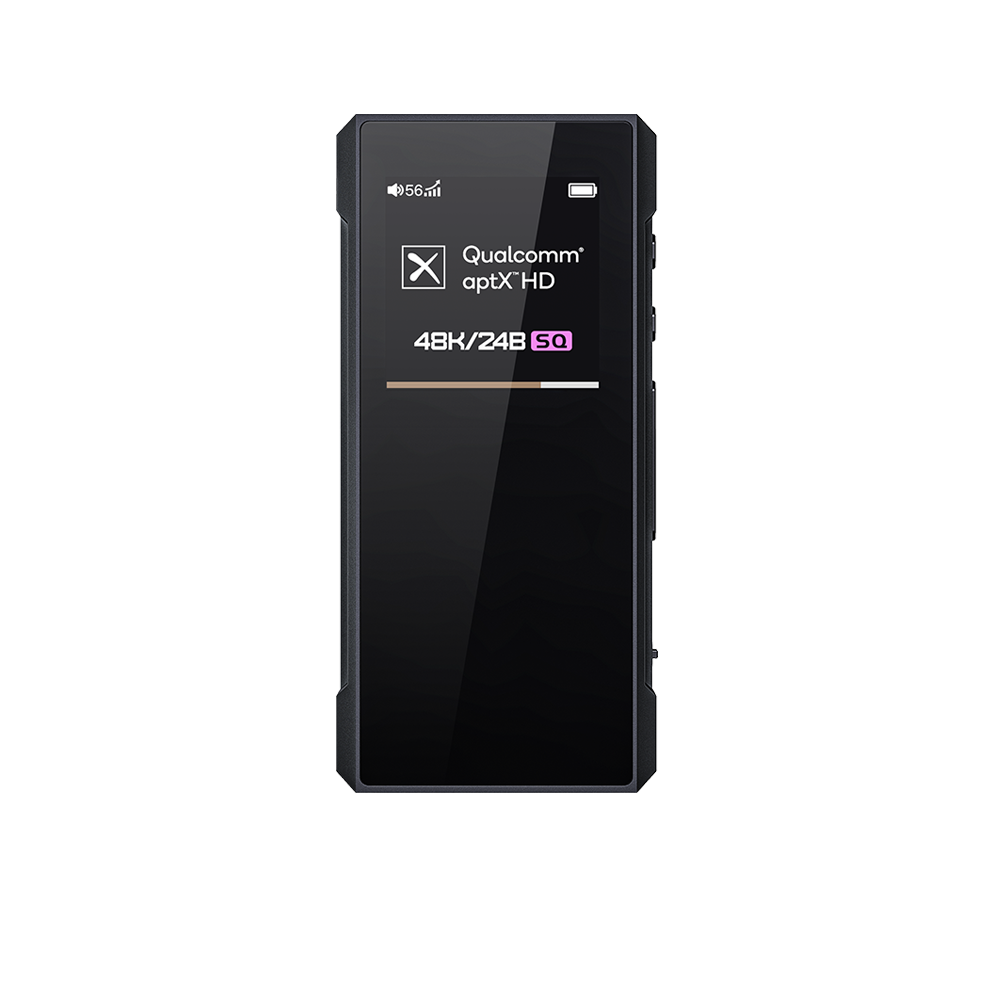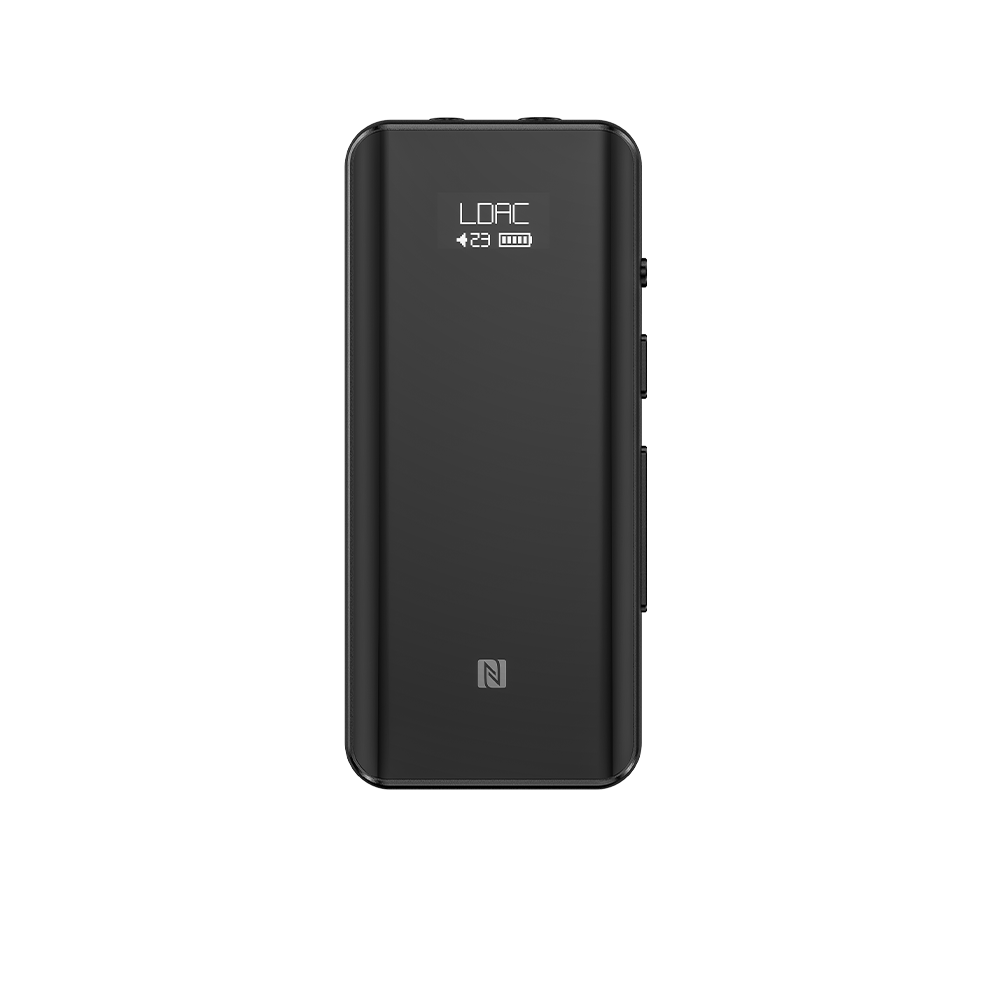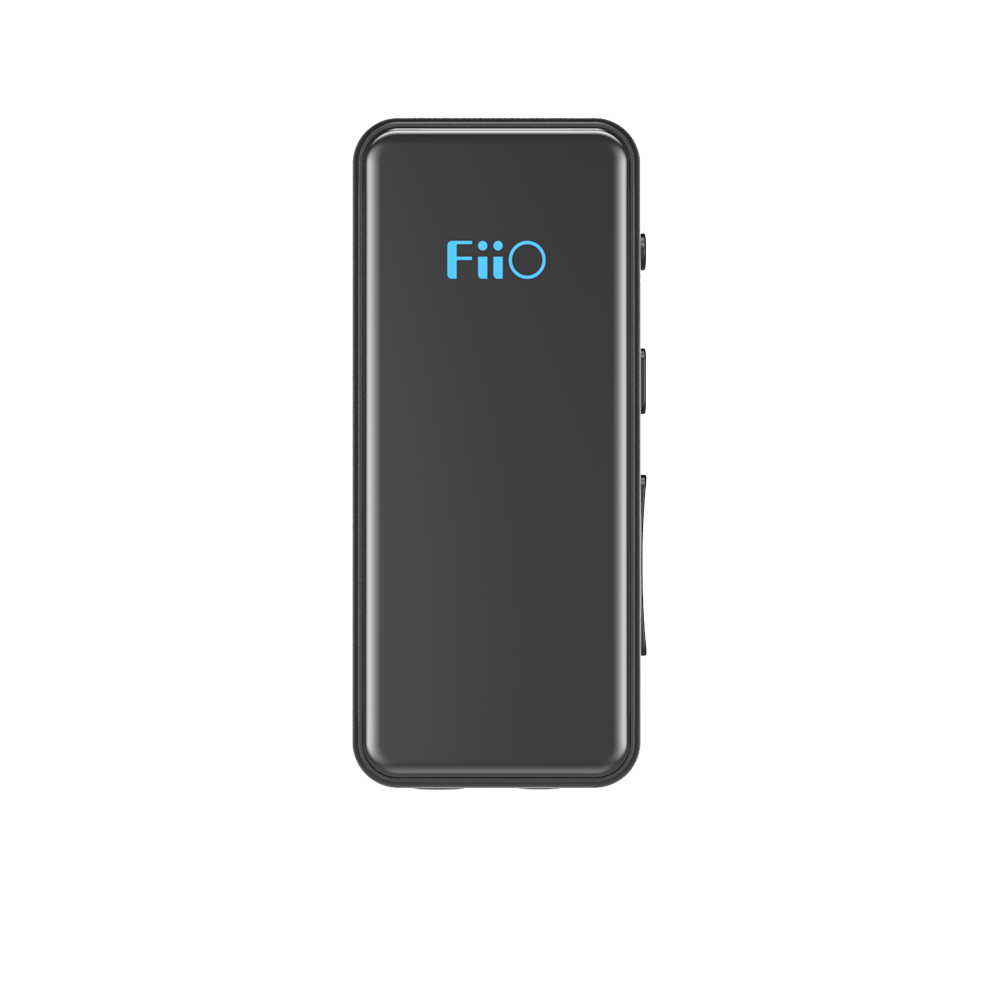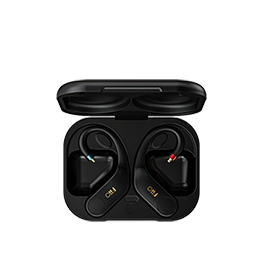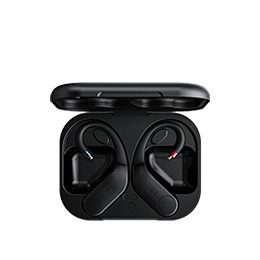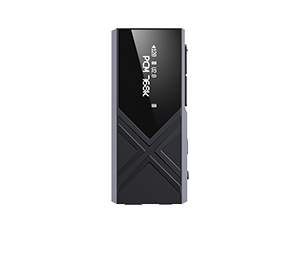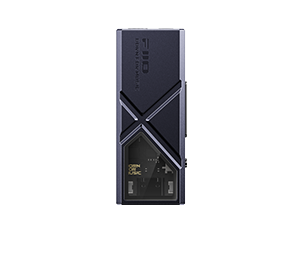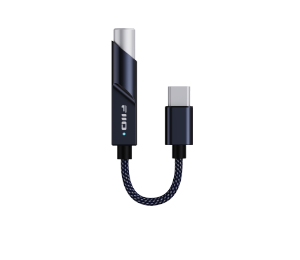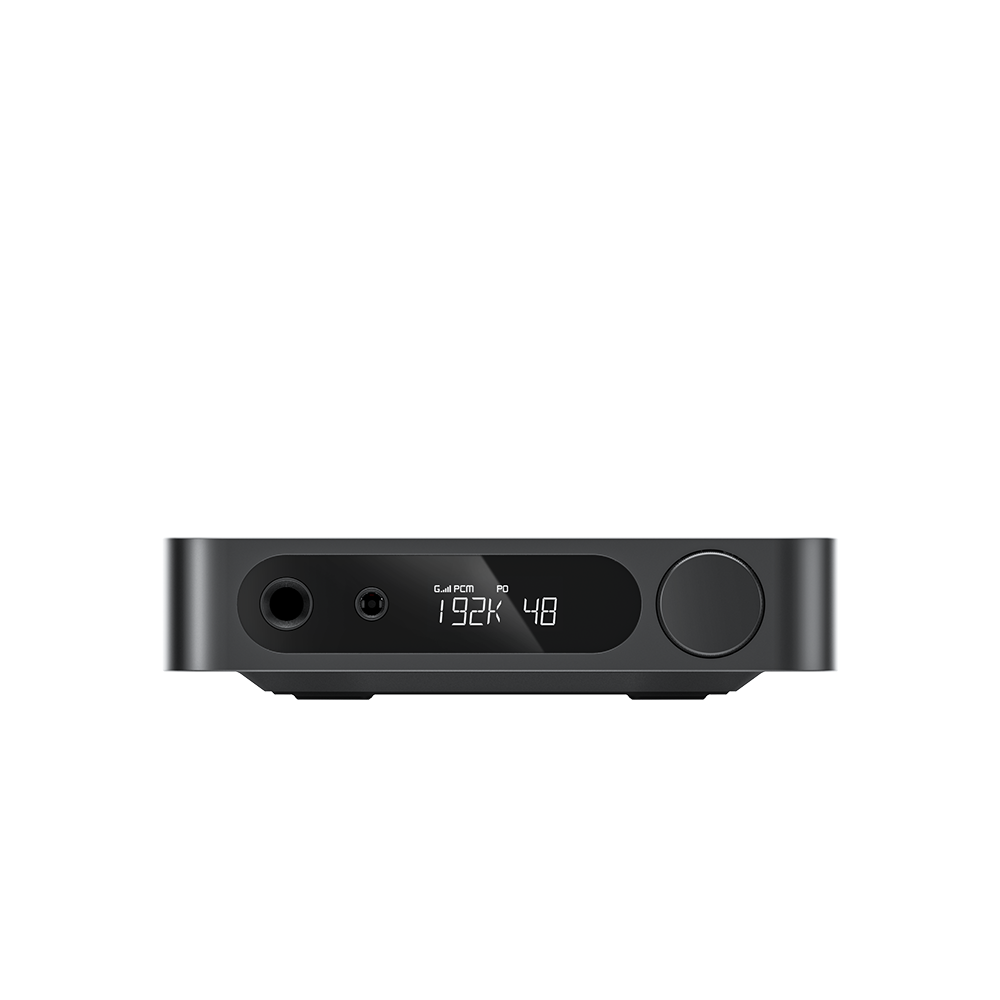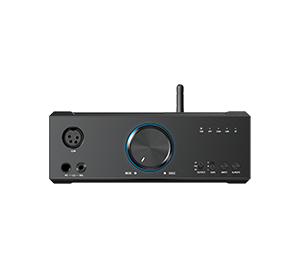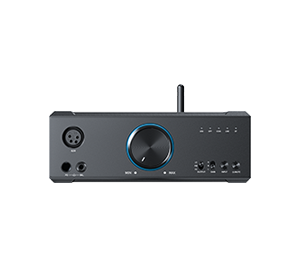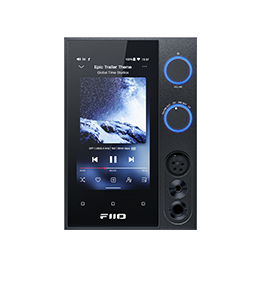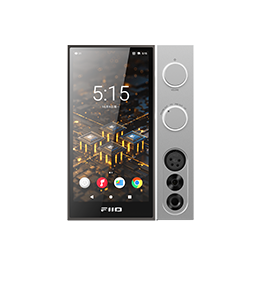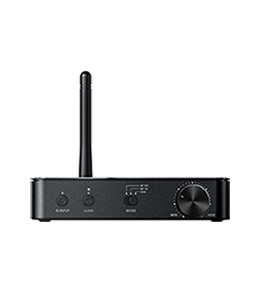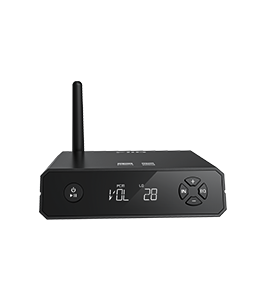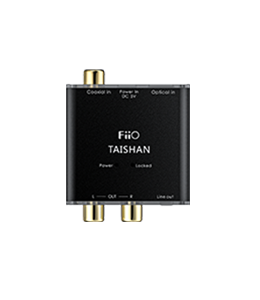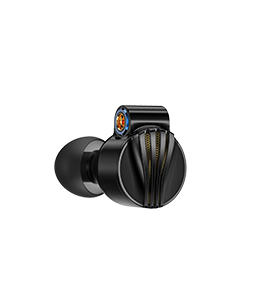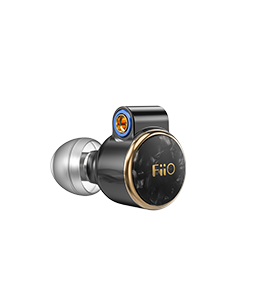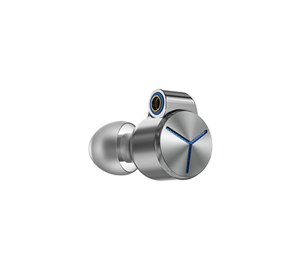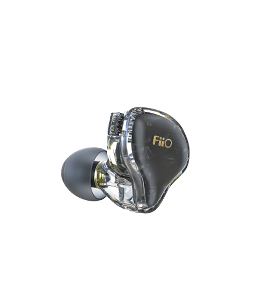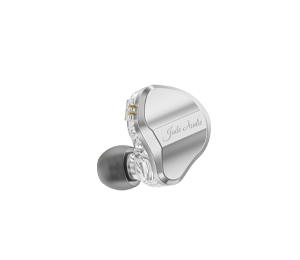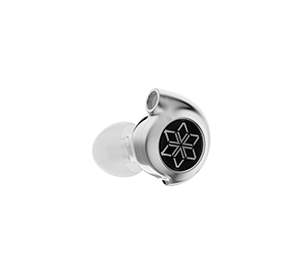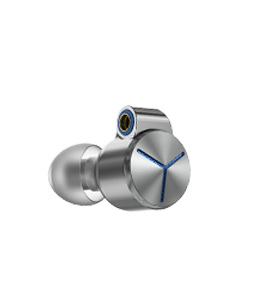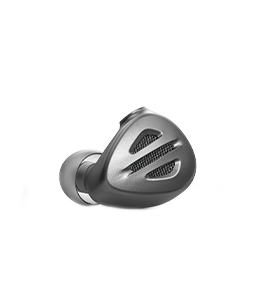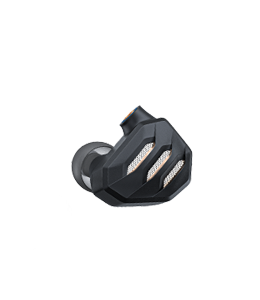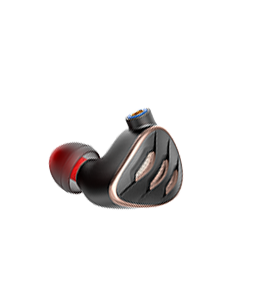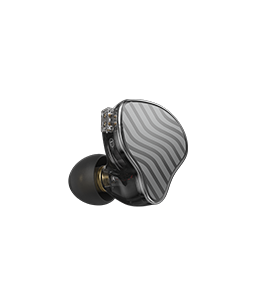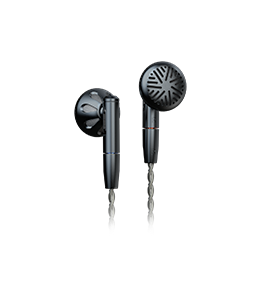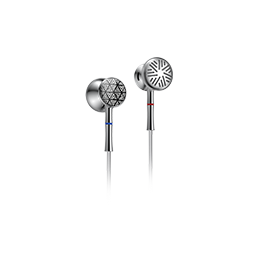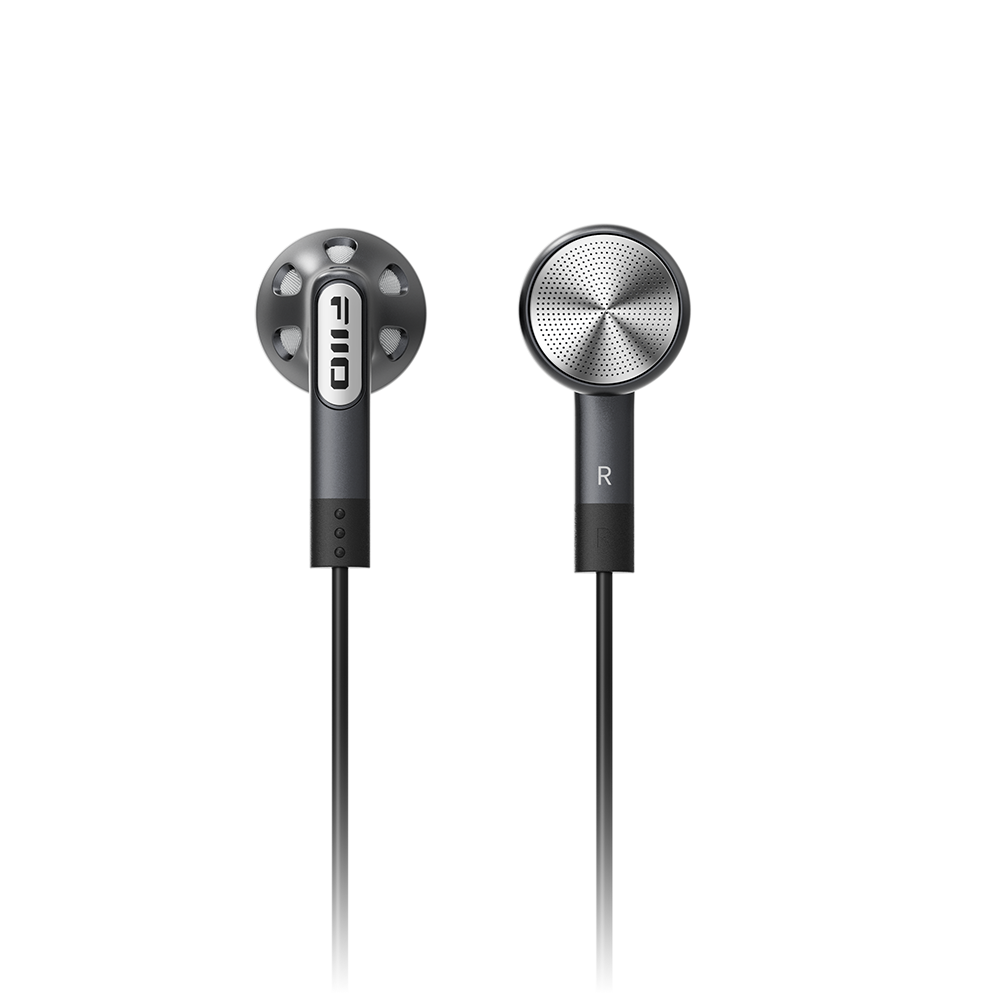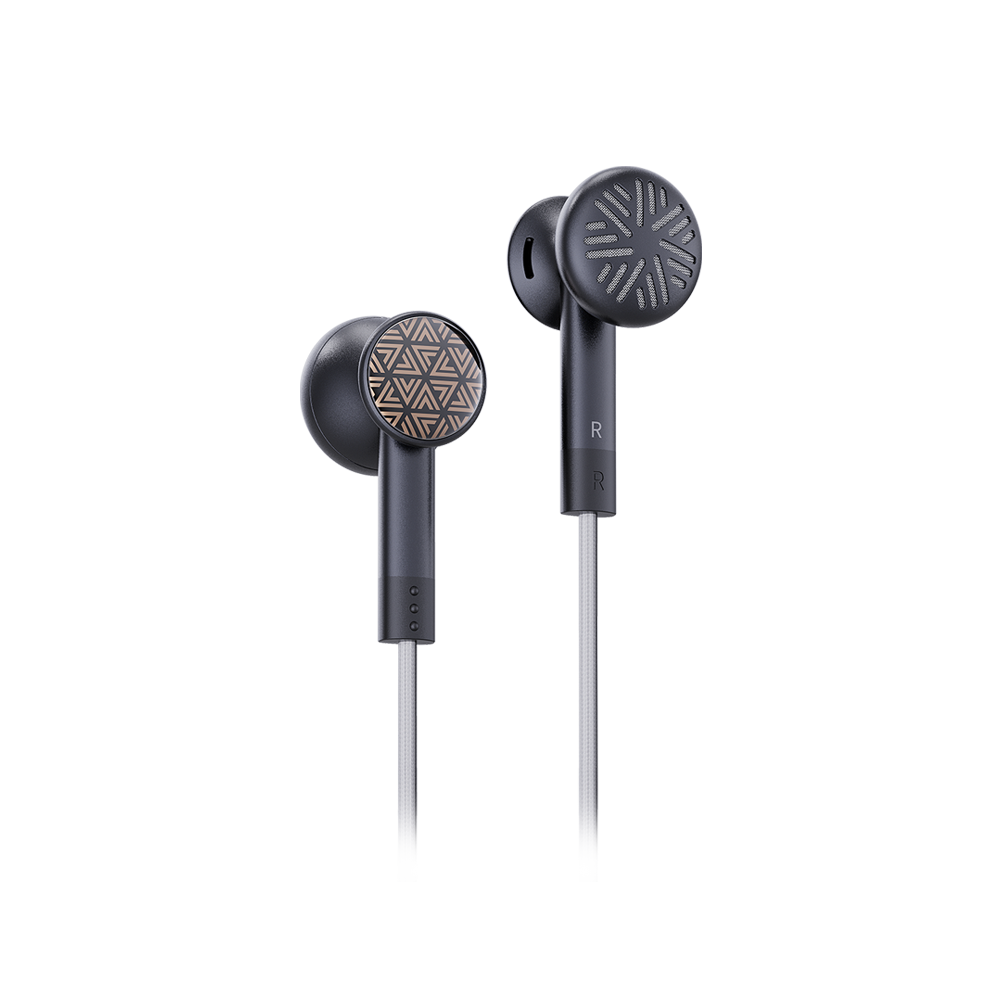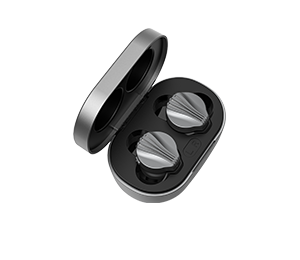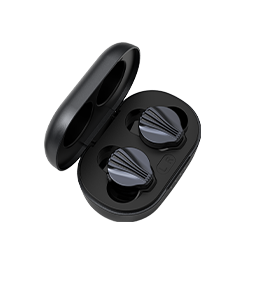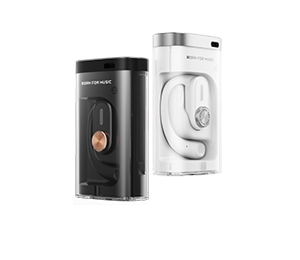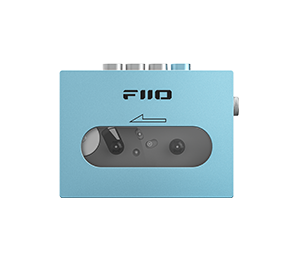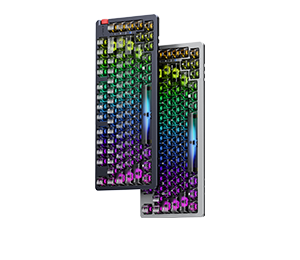Fiio X7 Mark II Music Player Review
Author: Tech Merit Reviews
Review from:samma3a
→→ Read the original article on samma3a:>> Click here
Fiio X7 Mark II Pros&Cons
Pros
Fantastic sound quality
Dual card slots
Swappable amp modules
Cons
Software lacks optomisation
No USB output
Fiio X7 Mark II Specs
Output power (single ended): ≥150mW @ 32Ω
Output power (balanced): ≥400mW @ 32Ω
Output Impedance (single ended): <1.2Ω
Output Impedance (balanced): <1.7Ω
Frequency response: 6 Hz~60 kHz (-3dB)
SNR: ≥116 dB
THD+N: ≤ 0.003% (1 kHz)
Channel separation (single ended): ≥73 dB (1 kHz)
Channel separation (balanced): ≥97 dB (1 kHz)
Formats supported: APE, FLAC, WAV, WMA, AAC, ALAC, AIFF, MP3, OGG, DFF, DSF, DSD64/128, PCM up to 384kHz/32-bit
Display: 3.97-inch 480 x 800 (233ppi)
Weight: 212g
Packaging
Recently Fiio seemed to have finally decided on a particular packaging style for their products, but the X7 Mark II is again a slight departure. Where we had no become accustomed to a black and white colour-scheme, the Mark II’s packaging is mostly black. It also seems as though they had finally settled on a naming-convention.
Officially, the latest iteration of the X3 is named the X3 Mark III. Their 3rd iteration of the X5, on the other hand, is called the X5 3rd gen, whereas the 2nd iteration of the X1 is sometimes either called the X1 2nd gen, or the X1ii. This isn’t anything really significant, but it sucks when you’re trying to do search engine optimisation.
After removing the outer sleeve we are left with a box that open a bit like a book. Lifting the lid reveals the X7 Mark II, underneath which are a few more smaller boxes that hold the various accessories and cables. 
What’s in the box?
Fiio X7 Mark II
Clear silicone case
Leatherette case
Micro-USB charging/data cable
COAX adapter cable
Ejector pin
Decorative strip
Amp module removal tool
Quick start guide
Warranty card

Accessories
One thing you can pretty much always count on is that Fiio will include a very decent amount of accessories with their products. With the X7 Mark II we’re treated to a total of 2 cases (a pre-installed silicone case, as well as a pleather case), a USB-cable for charging / data transfer, a COAX adapter cable, a tool to remove the swappable amp module, as well as an additional decorative strip.
The pleather case seems like it offers an adequate amount of protection for the device, and seems to sit snugly enough that it won’t allow the device to move around inside it. The additional decorate strip is simply used to ever so slightly change the design on the left side of the device
With the X5 3rd Gen, Fiio introduced certain design elements much akin to what we’ve seen on various Astell&Kern players, among others. So this decorative strip serves only to allow the amp modules to follow the design elements found on the left of the device.
Design
In terms of the design, Fiio have pretty much married the design of the original X7 with that of the X5 3rd Gen. The actual proportions of the chassis is nearly identical to that of the X7, whilst certain design elements (such as the sharp, bold lines on the left side of the device) have been lifted off of the X5 3rd Gen.
As we saw on the first X7, the bottom of the device houses the modular amp design. In the case of this specific X7 Mark II, the AM3A amp module houses a tradition 3.5mm single ended output, as well as a 2.5mm balanced output.
The top of the device is where you’ll find the power button, as well as the line-out/COAX/Optical combo jack. Selecting between which type of output will be used is done within the UI. For the X5 3rd Gen, Fiio opted to design it in such a way that the dual card slots mimic the type of SIM-slot that you’d get on a modern smartphone, and this design was carried over to the X7 Mark II as well. As such, a little pin is used to eject the tray. Whilst this isn’t the most convenient solution, it certainly does make the device look neater.
For the X5 3rd Gen, Fiio opted to design it in such a way that the dual card slots mimic the type of SIM-slot that you’d get on a modern smartphone, and this design was carried over to the X7 Mark II as well. As such, a little pin is used to eject the tray. Whilst this isn’t the most convenient solution, it certainly does make the device look neater.
 The left side of the device houses the play/pause button, volume wheel, and skip track rocker. It’s almost identical to that design of the X5 3rd Gen, with just a few aspects that have changed ever so slightly.
The left side of the device houses the play/pause button, volume wheel, and skip track rocker. It’s almost identical to that design of the X5 3rd Gen, with just a few aspects that have changed ever so slightly. As with the original X7 and X5 3rd Gen, the X7 Mark II utilises a touch interface and so most of the front face is taken up by the relatively large 3.97-inch touch display. Compared to the original X7, the Mark II’s display does render colours with a warmer tint, and so any text or album art that is white looks instead a little yellow. This also influences the blue colour used within the Pure Music app (among others) as this specific shade of blue looks a little more like teal rather than blue on the X7 Mark II.
As with the original X7 and X5 3rd Gen, the X7 Mark II utilises a touch interface and so most of the front face is taken up by the relatively large 3.97-inch touch display. Compared to the original X7, the Mark II’s display does render colours with a warmer tint, and so any text or album art that is white looks instead a little yellow. This also influences the blue colour used within the Pure Music app (among others) as this specific shade of blue looks a little more like teal rather than blue on the X7 Mark II.
The Mark II’s display also seems to have a bit more contrast, and so this does affect its dynamic range. Thus, the original X7 often looks as though it extracts finer image details a bit clearer. To the naked eye, brightness seems to be about the same.
Compared to the X5 3rd Gen’s display, the X7 Mark II’s display is noticeably brighter, making outdoor legibility better. The display also seems to be mounted closer to the glass panel on the Mark II, making it less reflective (another aspect that improves outdoor legibility).
Overall, Fiio did a pretty damn good job with the design of the X7 Mark II. It looks modern with just a bit of ruggedness. There are some minor QC issues though, mainly to do with the way the amp module(s) line up with the rest of the device’s body. Whilst this isn’t a major issue at all, it just doesn’t scream “REFINED!” either. It would’ve been great to see these lines and colours match up perfectly.
Whilst this isn’t a major issue at all, it just doesn’t scream “REFINED!” either. It would’ve been great to see these lines and colours match up perfectly.
Read: Fiio X5 3rd Gen Portable Audio Player Review
User Interface
As with the original X7 and the X5 3rd Gen, the X7 Mark II runs a customized version of Android Lollipop (5.1.1). As such, the interfaces are pretty much identical. This can be seen as both a good and a bad thing. Good, in the sense that it creates a certain familiarity between Fiio’s devices, but also bad in the sense that certain bugs and other limitations are carried over from one device to the next.
Let’s first focus on what’s good about Fiio’s approach.
Fiio have created the firmware in such a way that there are 2 different “modes”. The first is ‘Android Mode’ in which case the device can be used pretty much like any other Android device. You’re able to install and run different apps as well as being able to browse the web. This is obviously important as part of the advantage of these Android-based DAPs is their ability to run third-party streaming services such as Tidal and Spotify. This is great for anyone who is already accustomed to how other Android-based devices work.
The 2nd mode of operation is called ‘Pure Music Mode’. In this mode the only app that is allowed to run is Fiio’s proprietary Pure Music app. The idea with this is that all system resources will be directed, and without interruption, to the music player capabilities of the device, essentially turning it into a more dedicated DAP.
So, for the most part, Fiio have done a really good job with the Pure Music app and the UI in general. The interface the the Pure Music app feels modern and functional, but certainly can do with a little bit of cleaning up here and there.
However, the biggest surprise is the speed and responsiveness….or lack thereof.
Ok, no, the X7 Mark II isn’t exactly riddled with a whole bunch of hiccups or freezes, but it isn’t quite what you’d expect for a “2nd generation” device either, especially considering that Fiio has bragged about doubling the amount of RAM. The surprise here is that the original X7 feels overall faster than the Mark II. In fact, there are instances where the X5 3rd Gen performs faster than the X7 Mark II too.
Well, the first thing you’d do is turn on the device, right? This can be a little bit of a confusing experience if you’re not aware of how these X-series device work. For whatever reason, the power buttons must be pressed for around 4-5 seconds. Any less and the device simply will not power on. Once the power button had been pressed in for that period of time, there’s a further couple of seconds in which there is no indication that the device has started to boot up. For the X5 3rd Gen there is around a 5 second period before the little blue LED in the centre of the power button lights up. However, neither the original X7, nor the X7 Mark II have any such indicator. This means that, for the original X7 you’re left for about 4.5 seconds to wonder if the device is going to turn on, and around 7.5 seconds for the X7 Mark II. Both the X5 3rd Gen and the X7 Mark II require a total of about 7.5 seconds before their displays light up.
Below is a table to illustrate the total time taken for the X7 Mark II, original X7, and X5 3rd Gen to boot up into Pure Music mode.
Booting up into Android mode did prove to be a little faster.
As we can see, both the original X7 and the X5 3rd Gen is consistently faster than Fiio’s new flagship, with the original X7 being the most significant.
Another test to gauge speed is to perform a library update. For this the chosen storage was a 200Gb Sandisk card filled up with around 7000 files consisting of around 6500 tracks (MP3, FLAC, DSD) and around 500 or so JPG album art images. Below is a table to show the times it took Fiio’s devices to perform a full scan.
Not a great deal of difference between the devices in this test, although the X5 3rd gen was the slowest. It should be noted, though, that there is a “Performance Mode” setting within the X7 Mark II’s settings which allows you to toggle between ‘Balanced’ and ‘High performance’ mode. For the test in the above graph the setting was in ‘Balanced’ mode, and changing it to ‘High performance’ reduced the total required scan time for this test to 4 minutes and 38 seconds. That’s not exactly a major improvement, but it was enough to put the X7 Mark II in the lead by a few seconds. However, the kick between Fiio’s legs is the fact that the Shanling M2s manages to complete the same task in 3 minutes and 16 seconds. That means the X7 Mark II (even in performance mode) took roughly 42% longer to do the scan than the M2s.
And then there’s yet another speed issue which has plagued each and every single Fiio device that I’ve personally reviewed. For whatever reason, Fiio is either incapable of, or simply refuse to address the issue of exceptionally slow data transfer speeds. Using the same 200Gb card as previously, transferring an album via the USB cable resulted in an average transfer speed of about 4.5Mb/s. Conversely, the M2s manages to transfer the exact same album to the exact same card at an average rate of around 14Mb/s. That’s just over TRIPLE the speed of the X7 Mark II! C’mon Fiio!
So what could be the reason for this? How is it that a $200 “mini DAP” can be so much faster than a $650 flagship despite packing considerably less raw processing power?
Unfortunately, it seems that the issue here is the same issue that plagues Fiio with each of their devices – a lack of software optimization.
Whilst Fiio have clearly demonstrated that they have the capability to make their Pure Music app look pretty, they have unfortunately also shown that their knowledge in terms of software technicalities leaves much to be desired.
To confirm and illustrate that this was in fact the case, I switched the X7 Mark II into Android Mode and fired up the HibyMusic app.
FIY, HibyMusic are also responsible for the firmware on the Shanling M1, M2s, the new M3s, as well as the Cayin N3…so really, software is kinda their thing.
Note: before doing the scan again, I ensured to remove any folders which may contain previous databases used by the Android system.
This time ’round it only took a mere 1 minute and 40 seconds to perform the scan. That means that Fiio’s Pure Music app required slightly more than DOUBLE the time it took HibyMusic to complete the scan. That seems like a lot of waster or under-utilised resources. Obviously, none of the hardware change, so the bottleneck must lie within Fiio’s app.
So the potential is there, these X-series devices can honestly be incredible devices. But really, this lack of software optomisation is the key factor that keeps biting Fiio’s behind. It’s the number 1 complaint, again and again, for practically all of their devices from yours truly.
Another odd decision on Fiio’s part is to not properly implement the ability to use an external DAC via the USB-port. I cannot say that this is true for all DACs, but it certainly is for the iFi Micro iDSD Black Label. In fact, back in January of this year Fiio announced that this feature will eventually come to the X5 3rd Gen via a firmware update. But here we are, 10 months later, and this feature still has not been implemented – not even on their newest flagship. But, to make matters even worse, the iDSD works flawlessly with the original X7.
Yeah, go figure.
Then, there were 3 other slight issues that really annoyed me as a reviewer. To put it into context, when I compare the sound of 2 DAPs, I first ensure that both are volume matched as closely as possible by using a series of test tones and then checking the volume of the sound produced by a set of IEMs. So, when comparing the sound of actual music, I would plug the IEMs into one device, and then press play on both devices. Then, when switching the IEMs to the other device I’d first hit pause on both devices, do the swap, and then hit play again on both devices. This is simply to ensure that when I do the IEM swap, I do so at the exact same position within whichever track I’m listening to at the time.
So it was with this swapping of the IEMs that the first frustration was introduced. Perhaps it is due to the F9’s in-line remote, but every time I hit pause on the X7 Mark II and then removed the cable, the X7 Mark II would then carry on playing the track again.
There is a setting within the audio settings which allows you to enable or disable in-line remote controls. However, whilst disabling this setting did solve the problem, the issue would come back after rebooting the device, even if the setting still showed that it was not enabled. The only way to again sort this out is to toggle the in-line remote feature on and then off again. This isn’t a huge deal, but I did forget to do this pretty much every time I started doing comparisons.
The biggest annoyance, though, was that the X7 Mark II would periodically simply stop outputting any sound. This was fixed in one of 2 ways: either with a reboot, or by toggling between ‘Balanced’ and ‘High performance’ mode and then changing tracks. This issue occurred at least a dozen times, which makes it hard to believe that Fiio would not have encountered the same problem if they had tested the firmware properly.
The last issue has to do with the responsiveness of the touch display. There were numerous times where I tried to tap on the play/pause button without success, even with multiple tries. It’s unclear whether this was actually the display being unresponsive, or if it was due to the entire system being unresponsive during those brief moments. But whatever the case may be, the responsiveness certainly is not on the same level as that of a modern smartphone. It’s not even close to being terrible, but not great either. Thankfully all of these X-series devices have hardware play/pause and skip buttons which avoided the need to use the software buttons in those instances.
Read: Shanling M2s Portable Music Player Review
Sound
Back in 2015 Fiio launched the original X7. It was quite a revolutionary device in terms of its swappable amp modules, and was a major leap for Fiio from both a design and implemented hardware perspective. It was their first truly high-end device, created to compete with other pricey flagship DAPs. Fiio wanted to make a statement that they’re serious about sound, and so decided to utilise not the portable version of the 9018 Sabre DAC chip, but the full-on desktop version of it.
Because of these major design departures and intriguing hardware implementation, there was A LOT of hype around the X7. Forum posts kept flooding in about people’s excitement over the product, and when it was eventually made available there were even more posts to glorify the device’s sound.
But when I received the device, I was bitterly disappointed to say the least. It didn’t sound bad at all, but it simply could not hope to live up to the hype that was created.
Well, in all honesty, has any device ever truly lived up to the hype?
Due to those forum posts, my expectations were just way too high, and this serves to illustrate how damaging hype can be.
So, this time around, I refused to look at the X7 Mark II thread on Head-Fi or any other reviews. I didn’t want anything to either hype me up give me any preliminary bad vibes.
I can’t stress enough how glad I am to have done that.
This is quite honestly the first time in quite a while that I feel the urge to give Fiio a pat on the back. To say that the X7 Mark II’s sound took me by surprise is an understatement.
As mentioned, I wasn’t a fan of the original X7’s sound, nor that of the X5 3rd Gen, so I really wasn’t sure what to expect this time.
Thankfully, what I heard put a smile on my face immediately. This is it – this is what I expected form the original X7.
It sounds clear, dynamic, balanced, and refined. This is what a flagship should sound like.
And it really doesn’t matter what type of music you throw at the X7 Mark II, it handles it all like an absolute champ. There is definitely a very slight hint of warmth to its character, and a touch of smoothness in the upper registers, but nothing to the relative extremes of the X5 3rd Gen.
 Comparisons
Comparisons
X7 Mark I vs X7 Mark II
Well, I’m sure you’ve already put 2 and 2 together, given my above comments about the original X7.
The X7 Mark II is a definite step up form its predecessor. Honestly, the 2 sound so different, you’d swear they’re made by entirely different companies. Compared to the Mark II, the original X7 sounds soft, rolled off, and just way too smooth. There just isn’t a wonderful sparkle up top, and the clarity is not what you’d expect from anything related to Hi-Fi. Overall, there’s a certain element of excitement that’s completely missing with the original X7. It’s just a bit boring.
It should be noted that the comparison here is with the X7 Mark II using the AM3A amp module, whilst the original X7 is using the AM1 amp module.
Out of curiosity I swapped the amp modules to see how much of an effect the module had on the sound. This did seem to close the gap between the X7 Mark II and the original X7 slightly, but they still sounded like very different devices. So if you were wondering; no, simply using the AM3A with the original X7 is not a suitable substitute for the X7 Mark II and AM3A module.
X5 3rd Gen vs X7 Mark II
As briefly mentioned, I wasn’t a fan of the X5 3rd Gen’s sound. But what I found incredibly interesting with this comparison is that I kind of realised why I didn’t like the X5 3rd Gen’s sound. Whilst I was comparing the original X7 to the Mark II, I thought to myself, “this X7 sounds awfully familiar”. I then went ahead and volume matched the original X7 to the X5 3rd Gen. Well whad’ya know? They sound damn identical!
Ok, perhaps identical is a strong word, but they sound so similar that I honestly cannot reliably pin point any major differences between them, not whilst the original X7 is using the AM1 module anyways.
As such, my comparrison between the original X7 and the Mark II ends up being the same as what I’m hearing between the X5 3rd Gen and the X7 Mark II.
The Mark II just brings a new level of clarity and coherency to the sound. As though a veil has been lifted and you’re finally getting all of the music.
iFi Micro iDSD Black Label vs X7 Mark II
Now, this might seem like a bit of an unfair fight, however, the X7 Mark II does use a desktop-grade DAC chip. So really, it’s not that unfair.
This comparison also took me by surprise. No, the iDSD Black Label isn’t the absolute best sounding device. But you’d have to spend considerably more to get a significant improvement. As such, it’s my benchmark device. It’s what I use to gauge all other portable (and some desktop) system to. It sounds phenomenal, and anything that gets close to it is well-worthy of being considered to sound truly great.
So, how does the X7 Mark II fare against the iDSD?
No, the Mark II is not quite on the same level, but good grief it gets close. The X7 Mark II has a slightly narrower and thicker sound, giving it a more intimate and smoother presentation. It’s also not quite as clear sounding , but that’s not to say that any of the micro-details are missing, rather that those details are just not portrayed quite as clearly as on the iDSD. The iDSD just has that edge in clarity, instrument separation, and realism.
But again, holy cow it’s a close battle.
Of course, the Mark II obviously couldn’t hope to deliver the raw power that the iDSD can either, but if you don’t need all that power, the argument for ditching the iDSD in favour of a single-device solution does become rather strong. The iDSD not only weighs 46% more than the Mark II, but it’s also more than twice the size of the The X7 Mark II. However, the iDSD still requires a source of some sort, in which case the total size of the iDSD+source stack would equate to around triple the size of the Mark II, if not more. That’s a pretty significant aspect to take into consideration if we’re talking about portability. The fact that the X7 Mark II can very nearly (relatively speaking ) reach the sheer sonic capability of something like the iDSD Black Label whilst fitting into a package that is roughly 1/3 of the size is pretty damn amazing. What the iDSD offers in terms of outright sonic quality is a refinement in presentation and clarity, but by no means a leap in quality.
Read: iFi-Audio Micro iDSD Black Label Review Review
Value
As a reviewer, judging a product’s value can sometimes be a bit tricky. The value that a product holds for me can be quite different in terms of what my needs are, versus the needs of the person reading the review. As such, it’s often important to remind myself of this fact, and to take a step back and reevaluate my perspective.
However, the X7 Mark II makes my job far easier. As a reviewer, my highest priority is getting the best sound quality within my subjectively reasonable budget. The iDSD Black Label has thus far provided me with exactly that, and will continue to do so for the foreseeable future. But the X7 Mark II certainly has left quite an impression on me. In terms of outright audio quality and portability, the Mark II really does seem like a fantastic, “best of both worlds” compromise.
No, it’s not as compact as something like the Shanling M2s, nor does it sound quite as good as something like the iDSD Black Label. But as a single-device-solution, the Mark II would make perfect sense for someone who is willing to take that slightly downgraded audio quality in favour of a device that can fit relatively easily into your pocket. It’s a complete package – pick it up and go. The iDSD (or any other DAC for that matter) is useless on its own, it must be used with a source of some kind. And this is where the true value of the X7 Mark II is revealed. Previously the argument was always that an external DAC will provide significantly better audio quality at the expense of being bulky. But the X7 Mark II is narrowing that gap, it’s blurring those lines.
Of course, if you need the power of the iDSD, then you won’t really have a choice. But if you’re using relatively efficient headphones or IEMs, it seems incredibly unlikely that you’d be disappointed with the X7 Mark II’s sonic authority.
It is just that matter of Fiio’s lack of software expertise. It really doesn’t do the Mark II any justice. It feels as though it downgrades it from a “superb device” to a “very very good device”. Sure, you could argue that Fiio will address the issues with firmware updates, etc etc. But, there have been instances of Fiio never living up to certain promises, and after 10 months we are still waiting to see a fully functioning USB output for the X5 3rd Gen. So really, it’s anyone’s guess as to whether or not Fiio gives enough of a damn to invest the time and resources that the X7 Mark II truly deserves.
Nevertheless, the X7 Mark II’s excellent sonic performance does redeem the device somewhat – enough to make it a recommended device despite its drawbacks. If you’re familiar with my reviews, the previous sentence should tell you all you need to know.
Rating
The TECH MERIT rating system is designed to take as many aspects of the device into account as possible. As such, we have a basic rating, as well as a final rating. The basic rating rates the product purely as a high quality portable audio device, and is generally a good indicator of how it stacks up to its rivals in terms of standard features and specs. The final rating, however, grants bonus points for any extra features and specs that aren’t quite as common, and is a great way to judge the product as a complete package.
Packaging
Look and feel: 9 / 10
Included Accessories
Screen protector: YES
Protective case: YES
Cables: YES
Build
Quality control: 9 / 10
Seems durable: YES
Screen quality: 8 / 10
Intuitive interface: 8 / 10
Responsive interface: 8 / 10
Comfortable button layout: 9 /10
Internal storage: YES (64Gb)
Accepts external storage: YES
Relative silence when inserting cables: 8 / 10
Sound
Sound stage: 9 / 10
Detail retrieval: 9 / 10
Sibilance: 10 / 10
Instrument separation: 9 / 10
Neutrality of sound signature: 9 / 10
Ability to EQ: YES
Plays lossless audio: YES
Plays 24-bit: YES
Hiss: 9 / 10
Portability
Small size: 7 / 10
Relatively low weight: 7 / 10
Battery life more than 8 hours: YES
Value
Competitive price-point: YES
Relative value: 8 / 10
Manufacturer
Released the device with relatively bug-free software: 8 / 10
Is prompt with software updates: 6 / 10
Is active and prompt on forums/social-media: 8 / 10
Basic Rating: 8.5
Bonus points
Bass boost: –
Various digital filters: YES
Allows 3rd party apps: YES
Number of cables included: 2
Number of gain positions: 2
Fast charging: –
How premium the case feels: 7 /10
Bluetooth: YES
Apt-X: YES
Premium look and feel of the device: 8 / 10
Number of digital connections: 2
Number of analogue connections: 3
Power adapter included: –
Balanced output: YES
Dual card slots: YES
Touch screen: YES
WiFi: YES
Dual DAC setup: –
Premium DAC chip(s) used: YES
Screen protectors included: 1
Use of metal and/or glass: YES
Plays DSD: YES
Plays 32-bit: YES
Ultra low power-saving mode: –
Wireless connection quality: 9 / 10
Gapless playback: YES
Final Rating: 9.4
→→ Read the original article on samma3a : >> Click here



